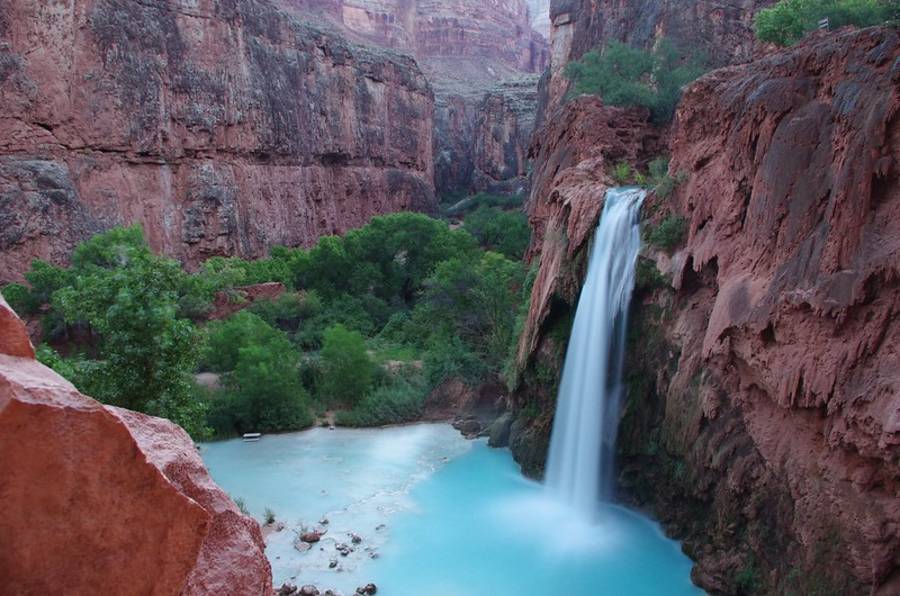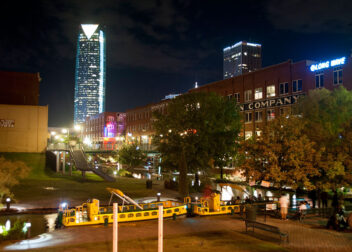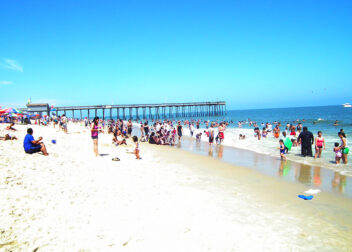Havasu Canyon
Havasu Canyon- Hike To The Most Remote Village In The USA
Standing on the edge of the towering cliffs, we see a dusty trail switchbacking into the wide canyon before disappearing into the haze of the morning light.
Apart from taking a pricy helicopter, this is the only way to the isolated community of Supai, that awaits with the promise of a cool coke some 16 kilometers beyond the rest of the world at the bottom of the Grand Canyon. The Havasupai, the people of the blue-green water, have lived and thrived in this remote sidearm of the Grand Canyon for the past 800 years, but Havasu Canyon is also home to a paradisiacal landscape of waterfalls and lush vegetation. This little Garden Eden of tumbling waterfalls in the midst of the otherwise arid landscape of Arizona is hardly a secret and tourism is the main income of the canyon’s inhabitants. But luckily, the remoteness and the hard hike required limit visitor numbers considerably.
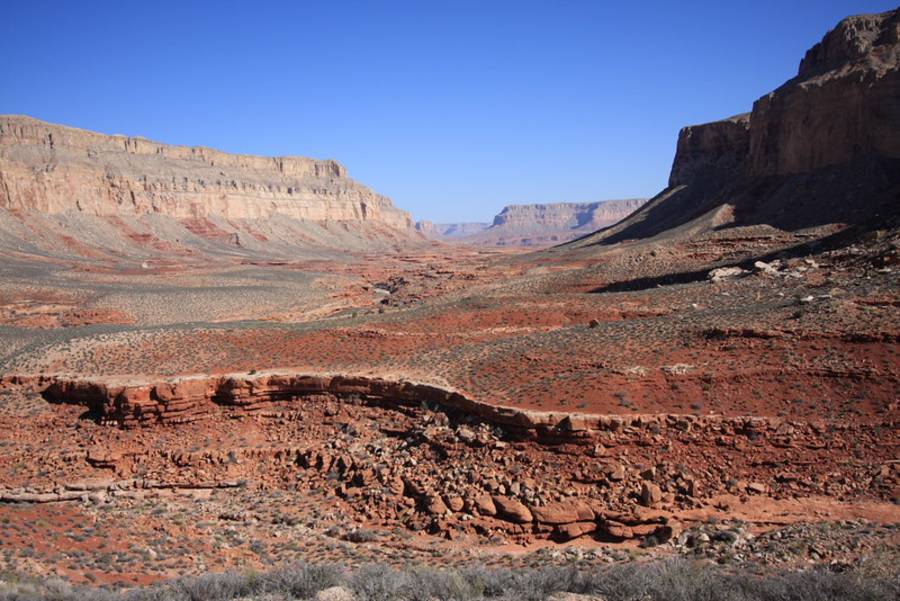
During the four hour hike, we see no one but the mule and horse train thundering over the rocks, carrying goods and mail from the road all the way to the remote village. Supai is the only village left in America who gets its mail delivered by mule and we are lucky enough to meet the mailman on our way through the canyon.
Dressed as a cowboy in a weathered leather hat and jeans, he leads his mules over the trail littered with tricky rocks and nods to us, as he rides deeper into the canyon. We follow, albeit slower. We started out on top of a wide valley and after hours of hiking, end up walking through a narrow slot canyon with walls so high that they block out the sun almost completely. The trail that leads deeper and deeper into the canyon is made of a mixture of sand and clay. The kinda child would love to dip his hands into, play with and build fancy buildings formed in wild imaginations. Walking is hard though, as our feet sink and slip on the uneven surface.
And then, when we think we couldn’t go any further, the canyon opens up and the sound of running water announces the pocket of civilization just around the corner.
The town of Supai is made up of small one-story houses with peeling white paint jobs and big fenced-in yards. Horses stand tied up in the shade waiting to be loaded with goods, others reach their heads over the fence to get a quick pat on the nose. In the center of town, a small, lone restaurant and even smaller convenience store provide the only sustenance for travelers. Supai has a somewhat run-down, derelict look, but at the same time is very lively.
Two siblings play amongst rusting clatter strewn across a yard, chasing each other around obstacles in a mad game of Cowboys and Indians. As soon as the girl sees the two weary hikers, she comes running, black hair flying wildly in the wind.
“Bang, bang, bang”, she shouts. The green plastic revolver in her right hand is aimed squarely at my chest. Her excited brother, only steps behind, is clutching a similar weapon.
“You’re dead”, she says, as I do a dramatic dying pirouette in the midst of the dirt trail. The two horses watching lazily from the sidelines barely blink at the performance. Brendan meanwhile observes that this isn’t very nice, to ambush weary travelers on the road like this.
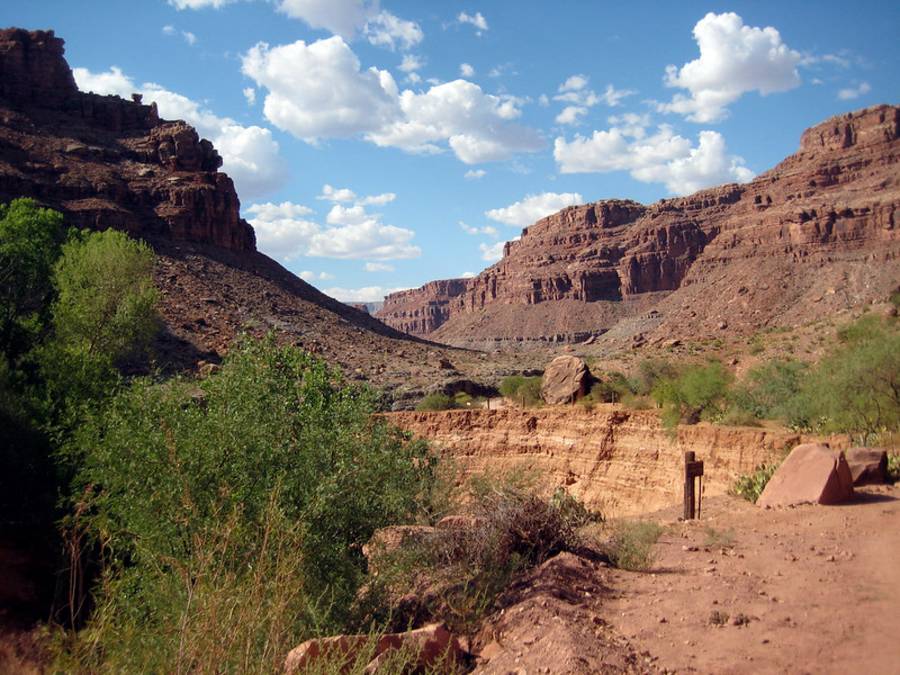
Resurrected I wearily make my way down the path again. After hiking on the trail all morning, the blister I developed earlier has gone numb, a positive side effect that sadly doesn’t extend to the rest of my aching feet. Every step hurts as we reach the last two miles of the hike, but at least the end is almost in sight.
Soon we are rewarded with the sound of falling water and around the next bend in the road, the dense foliage opens up and we get a view of pure beauty.
Wide streams of water tumble straight and fast into the blue-turquoise pool below, swirling around the bigger boulders lining the basin and collecting once more into a river to continue the descent into the canyon. In the backdrop, the dramatic orange and red walls of the canyon glow in the sunlight, creating a scene that looks straight up too perfect, too idyllic, and too surreal to be true.
This incredible waterfall, surrounded by bright blue pools and glowing green foliage in what is otherwise dry, desert-like landscape, is something you’d expect to see in the scenes of a fantasy movie or at most in an artfully created painting, but not in real life, where tour busses usually drop off yelling tourists by the hundreds at a spot this spectacular.
But here we are, completely alone in this small paradise and the hike further down Havasu Canyon proves to be equally breathtaking.
It’s almost like an artist took a paintbrush and splattered the landscape with vivid watercolors. Around every bend of the trail, another waterfall awaits. Some look like tiny steps, formed by levels of boulders in the stream, others are tall and skinny. What they all have in common is the turquoise color.
Eventually, we arrive at the most famous one of the waterfalls, Havasu Falls, and it is easy to see why this cascade seems to be the main attraction. If possible, the falling water appears to be even bluer than before, tumbling down into a deeper section of the canyon is a perfect arch. Again, the collecting pool of water forms an oasis in the otherwise barren canyon and it is here that we finally drop our heavy packs and set up the tent.
Although the air is chilly in midwinter, we decide to hike up our pants and go explore in the knee-high pools formed by Havasu Falls. Surprisingly, the water is mildly warm and feels soothing on our aching feet as we dig our toes into the bright white mud below.
After spending the night wrapped up in our thickest jackets, but still shivering in our sleeping bags, we decide to hike even further into the canyon, to what we heard is the secret beauty of Havasu Canyon.
We arrive at Mooney Falls just as the sun reaches the canyon walls and spills over the edge in a haze of dazzling light. After our eyes have adjusted to the sudden brightness, we see that the mist rising from the awe-inspiring waterfall has formed a powerful beam of light pointing into the canyon below. Mooney Falls is taller, more powerful, and more spectacular than the falls before and we find ourselves at a loss for words at the creation in front of us. A barely recognizable trail leads down the cliff edge and we have to balance like goats on the steep rocks in order not to tumble into the abyss next to us. We shoot until our batteries are blinking red and empty, before shouldering our packs again and hiking the long way home.
Planning your trip to Havasu Falls:
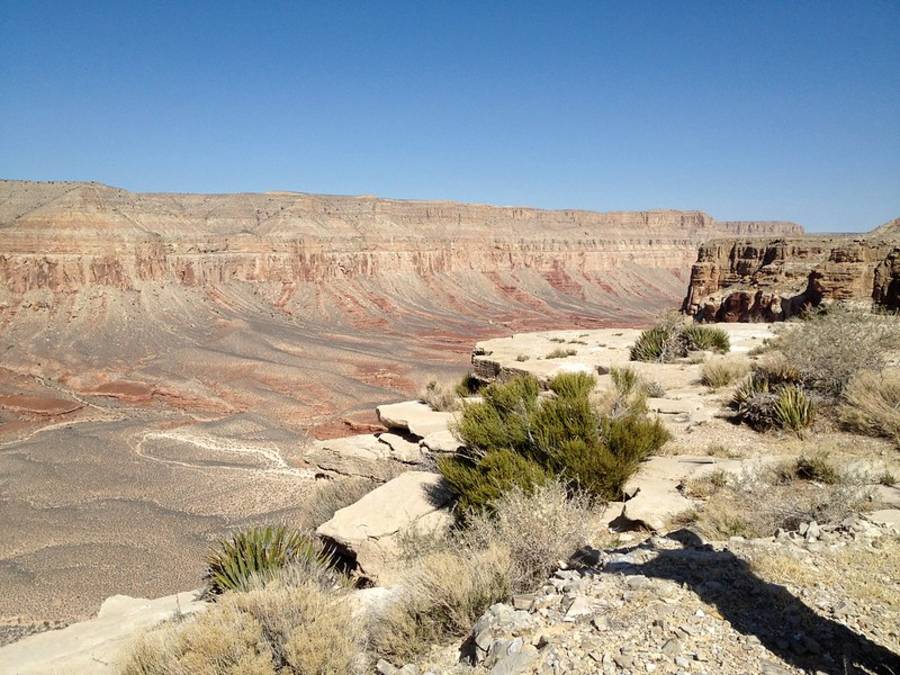
- Hiking is by far the cheapest option to get to Havasu Falls. But, and here’s the but, the hike is very strenuous and long (16km/. Bring good hiking boots and make sure every member of your party is in decent shape. If not, there is the option to ride a mule or horse there or take the helicopter – but be prepared to shell out some money.
- The entrance fee as of 2015 is 35$, the environmental fee is 5$, camping is 17$ per person and night, and the one and only lodge offer rooms at 145$ per night. I can highly recommend the campground, it is beautiful and located right at the edge of Havasu Falls, while the lodge is a 2-mile hike away.
- I suggest you bring your own food into the canyon as food options are very limited and rather expensive in Supai. Definitely make sure you carry enough water for the long hike, there is nowhere in between to fill up and you won’t find drinking water until you arrive in Supai.
- Start hiking early in the morning. Many people underestimate the length of the hike and thus arrive too late at the falls or even get caught in the canyon in the dark. We started our hike around 9 am and arrived at the falls around 1:30 pm, with plenty of time to spare for exploring and taking photos.
- And, guys, don’t forget to bring a sturdy tripod and your filters to capture those stunning waterfalls appropriately!
Havasu Canyon Things to do
Havasu Canyon is a breathtaking destination located in the Grand Canyon, Arizona, that offers a wide range of outdoor activities and attractions for visitors to enjoy. Here are some popular things to do in Havasu Canyon:
- Hiking: Explore the stunning scenery and unique geology of Havasu Canyon on foot. There are several trails to choose from, including the Havasu Canyon Trail, the Mooney Falls Trail, and the Beaver Falls Trail.
- Swimming: Havasu Canyon is home to several clear, blue-green pools of water, including Havasu Creek, Mooney Falls, and Beaver Falls, that are perfect for swimming and cooling off on hot days.
- Photography: With its breathtaking beauty, Havasu Canyon is a photographer’s paradise. Capture the stunning waterfalls, vibrant red cliffs, and lush vegetation in your lens.
- Camping: There are several campsites in Havasu Canyon, some of which offer views of the stunning waterfalls and canyons.
- Wildlife Watching: Havasu Canyon is home to a wide range of wildlife, including bighorn sheep, mountain lions, and coyotes. Keep your eyes peeled for these and other animals as you explore the area.
- Cultural Experiences: The Havasupai Tribe has lived in Havasu Canyon for centuries, and they offer a unique cultural experience for visitors. Visit the tribal village to learn about their customs, history, and way of life.
These are just a few of the many activities and attractions available in Havasu Canyon. Whether you’re looking for adventure or relaxation, this stunning destination has something for everyone.
How to reach
Havasu Canyon is located in the Grand Canyon in Arizona, and there are several ways to reach it:
- By Car: If you’re driving from Phoenix, Arizona, it takes approximately 4 hours to reach the trailhead at Hualapai Hilltop. From there, it’s a 10-mile hike to Havasu Canyon.
- By Helicopter: For a more scenic and quicker option, you can book a helicopter tour to Havasu Canyon. The helicopter ride takes approximately 45 minutes from the airport in Peach Springs, Arizona.
- By Horseback: If you prefer a slower and more scenic journey, you can arrange a horseback ride to Havasu Canyon. This typically takes around 3 hours, and you’ll be able to enjoy the stunning scenery along the way.
Regardless of how you choose to reach Havasu Canyon, it’s important to be prepared for the journey. Bring plenty of water, snacks, and sunscreen, and be sure to check the weather and trail conditions before you go.
Note: Access to Havasu Canyon is restricted, and a permit is required for overnight stays. Permits are limited and can sell out quickly, so it’s important to plan ahead and book in advance.
Essential Information
Here is some essential information for visiting Havasu Canyon:
- Permits: A permit is required for overnight stays in Havasu Canyon, and they can be reserved online through the Havasupai Tribe’s official website.
- Weather: Havasu Canyon has a warm and dry climate, with temperatures ranging from 80-90°F during the day and 60-70°F at night. Summer months can be extremely hot, so be sure to bring plenty of water and protect yourself from the sun.
- Trail Conditions: The trails in Havasu Canyon can be challenging and rocky, so be sure to wear appropriate footwear and bring a sturdy hiking stick for balance. Check the trail conditions before you go and be prepared for steep and rocky terrain.
- Camping: Camping is available in Havasu Canyon, and there are several designated campsites with picnic tables and fire rings. All food and trash must be packed out, and fires are only allowed in designated fire rings.
- Water: Water is available in Havasu Canyon, but it’s important to treat or boil it before drinking to prevent illness. It’s recommended to bring a water filtration system or purification tablets to ensure safe drinking water.
- Emergency Services: Emergency services are limited in Havasu Canyon, so it’s important to be prepared and self-sufficient. Bring a first aid kit, a reliable source of light, and a map and compass in case of an emergency.
- Respect for the Environment: Havasu Canyon is a delicate and pristine environment, and it’s important to respect the land and its inhabitants. Practice Leave No Trace principles, stay on designated trails, and respect wildlife and the rights of the Havasupai Tribe.
By keeping these essential tips in mind, you’ll be well prepared for your trip to Havasu Canyon and can ensure a safe and enjoyable experience.

